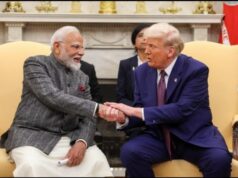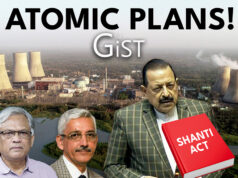Here’s a paradox: Prime Minister Modi in Vienna is the first visit by an Indian prime minister in more than 40 years, yet it may matter less than India’s ties to the Vienna-based International Atomic Energy Agency (IAEA), which drives cooperation worldwide in the peaceful uses of nuclear energy.
India is a key figure in this body, because it is a nuclear power producing country in the Middle East-South Asia (MESA) region. MESA was the brainchild of Dr Homi Bhabha, the father of India’s atomic energy programme, who shrewdly saw virtue in placing this country in an IAEA grouping with virtually no nuclear power industry to speak of.
“Result: India is a near permanent member of the executive board of the IAEA and although it produces only around 10,000 megawatts of nuclear power, gets invited to key meetings every year,” says Syed Akbaruddin, India’s former permanent representative to the UN who also served in the IAEA in Vienna.
There’s another side to Austria: it strongly opposed along with Ireland, a waiver by the Nuclear Suppliers Group on nuclear trade with India in 2008, since we remained outside the Nuclear Non-Proliferation Treaty and had nuclear weapons. But that is history.
It’s not clear at this point whether Prime Minister Modi has any meetings or briefings lined up with the IAEA brass, but Ambassador Shambhu Kumaran, who is India’s point man with that agency, will do whatever is required.
To be fair, Austria carries its own weight when seen from Delhi. It is presently co-chair of the Inter-Governmental Negotiations on UN Security Council Reform, and hence is of some importance to India’s quest for the holy grail of permanent membership of the UN Security Council.
There’s more.
“It’s not a member of NATO although it is a member of the European Union,” Akbaruddin pointed out. “That gives it a certain flexibility in terms of foreign policy. It is less vocal about Russia than Europe’s NATO members and Russia has considerable investments in Austria including in the banking sector.”
For India, that signals a certain balance in Austria’s foreign policy. It explains why Modi is combining a visit to Russia with one to Austria. The outreach is also part of Modi’s effort to build relations with smaller countries in various parts of the world. Ireland for instance, in 2015 and Papua New Guinea last year.
Bilateral trade with Austria is less than $3 billion but it has certain niche technologies that India has been able to tap: tunnelling through mountains, for instance, which some Austrian companies are engaged in to build highways or railways in India’s hill states.
Reports suggest there may be as many as 40 Austrian firms engaged in infrastructure, track-laying besides tunnelling projects in India.
There’s also a “Startup Bridge” launched in February last year, to foster innovation and entrepreneurship between the two nations. A Migration and Mobility Agreement signed in January 2023 provides for the return of Indians who enter that country illegally but also provides a window for those with skills and training to reside and work there legally.
Thirty eight years in journalism, widely travelled, history buff with a preference for Old Monk Rum. Current interest/focus spans China, Technology and Trade. Recent reads: Steven Colls Directorate S and Alexander Frater's Chasing the Monsoon. Netflix/Prime video junkie. Loves animal videos on Facebook. Reluctant tweeter.




